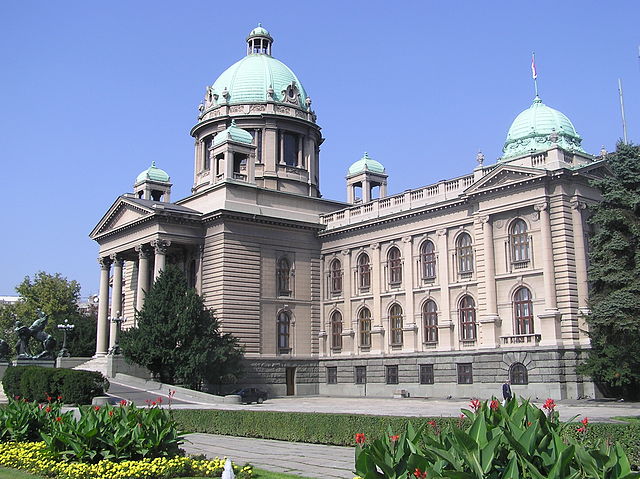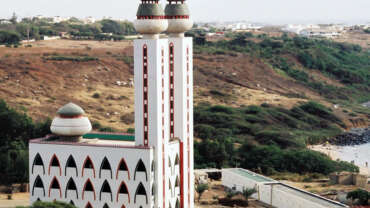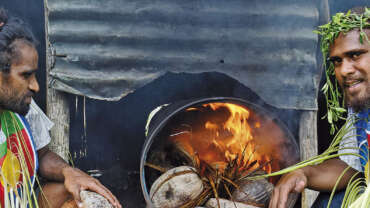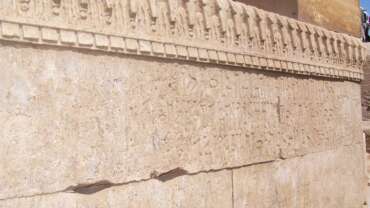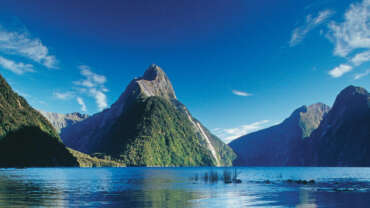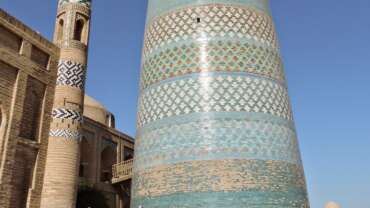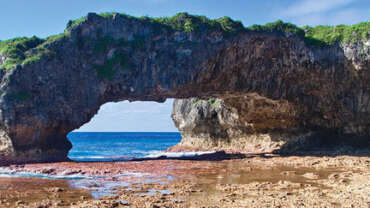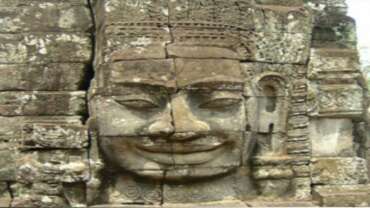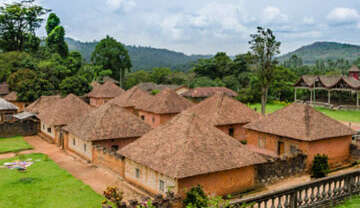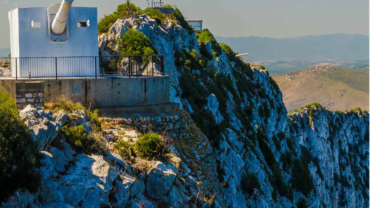Serbia – The place to be
Serbia, officially the Republic of Serbia, is a landlocked country situated at the crossroads of Central and Southeast Europe in the southern Pannonian Plain and the central Balkans. Serbia, country in the west-central Balkans. For most of the 20th century, it was a part of Yugoslavia.
The capital of Serbia is Belgrade (Beograd), a cosmopolitan city at the confluence of the Danube and Sava rivers; Stari Grad, Belgrade’s old town, is dominated by an ancient fortress called the Kalemegdan and includes well-preserved examples of medieval architecture and some of eastern Europe’s most-renowned restaurants. Serbia’s second city, Novi Sad, lies upstream on the Danube; a cultural and educational centre, it resembles the university towns of nearby Hungary in many respects.
History of Serbia
The coming of the Serbs
The use of the term Serb to name one of the Slavic peoples is of great antiquity. Ptolemy’s Guide to Geography, written in the 2nd century CE, mentions a people called “Serboi,” but it is not certain that this is a reference to the ancestors of the modern Serbs. The earliest information on the Serbs dates from the late 6th century, when they were vassals of the Avars and later clients of the Byzantine emperor Heraclius. In order to drive the Avars and Bulgars back toward the east, Heraclius concluded an alliance with several Slavic tribal groupings that had originated northeast of the Carpathian Mountains. Under Byzantine patronage, Slavs settled widely in the Balkans, reaching as far south as the Aegean Sea and even settling in parts of Asia Minor. The tribal groups known as the Serbs settled inland of the Dalmatian coast in an area extending from what is today eastern Herzegovina, across northern Montenegro, and into southeastern Serbia.
The South Slavs had become firmly established throughout the Balkans by the late 7th century, but the Slavicization of the area was a long and erratic process, as was the period of cultural assimilation under Roman rule. The area was therefore for a long time referred to as “Vlachia” and “Sclavinia.”
Medieval Serbia
The early Slav states
The unstable situation of the South Slavs, located as they were on the frontier between the Byzantine Empire and the seminomadic peoples of Asia, enabled them to assert some measure of independence. The basis of the Serbs’ social organization was the zadruga, or extended family. Several zadruge were grouped locally under a župan, or chieftain. With kinship and locality playing such a pivotal role in social organization, sustained collaboration within larger groups was difficult. Several župani might, on occasion, unite under a veliki župan, or grand chieftain, who for a short time would succeed in establishing control over a substantial territory and declare himself king or emperor.
The first such state to which Serbs attach a political identity was created by Vlastimir in about 850. This state was centred on an area in what is now eastern Montenegro and southern Serbia known as Raška and extended over the valleys of the Piva, Tara, Lim, and Ibar rivers (or roughly between the Durmitor and Kopaonik mountain ranges). The kingdom initially accepted the supremacy of Constantinople, which was subsequently torn by a contest between Simeon I, ruler of the first Bulgarian empire, and the veliki župan Česlav, leader of a rival Serb kingdom known as Zeta. After Česlav’s death, Byzantium again asserted control.
The significance of the early Serb protostates lies in their legacy of an enduring link between the Serb people and the Slavonic liturgical tradition of Orthodox Christianity. Christianity had been introduced into the Balkans during the Roman period, but the region had largely reverted to paganism by the time the Slavs arrived. There is some evidence that missionaries were active in the region as early as the 7th century. A more-permanent Christian presence was achieved in the late 9th century, when the Byzantine emperor Michael III commissioned two brothers from Thessalonica, Cyril (Constantine) and Methodius, to evangelize the Slavs. Michael encouraged Cyril and Methodius to preach in the vernacular, and to facilitate this task they invented a script using the phonetic peculiarities of the Slavic tongue. Initially known as Glagolitic, the script was subsequently revised to employ characters resembling those of Greek and became known as Cyrillic.
The translation of the scriptures and liturgy was a key aspect of the dissemination of Christianity among Serbs. The influence of the Eastern church was assured over the greater part of the Balkans, and the use of the Cyrillic alphabet became one of the most visible cultural aspects separating Serbs (together with Bulgarians, Macedonians, and Montenegrins) from Croats and Slovenes.
The Golden Age
Although the foundation of a Serbian state may be ascribed to the principality of Raška, a stable and continuous state appeared in this area only under Stefan Nemanja. Stefan assumed the throne of Raška in 1168, but he continued to acknowledge the supremacy of Byzantium until 1185. In 1196 he abdicated in favour of his son Stefan (known as Prvovenčani, the “First-Crowned”), who in 1217 secured from Pope Honorius III the title of “king of Serbia, Dalmatia, and Bosnia.” Under the Nemanjić dynasty, which was to rule the Serb lands for the next 200 years, a powerful state emerged to dominate the entire Balkan Peninsula. It was founded, in part, on the ability and administrative capacity of its rulers and also on the establishment of a link between church and state.
The rise of the Nemanjić dynasty was facilitated by the defeat of the Byzantine Empire, under the impact of the Fourth Crusade (1204), and the creation of a short-lived Latin Empire. Even after the fortunes of Byzantium were revived after 1261, the primary frontier of Nemanjić expansion lay to the south. Power was seized and consolidated through opportunities offered by a weak Constantinople, and the kingdom extended its authority over an assortment of peoples. Skopje in Macedonia was taken in 1282 by Stefan Uroš II and became the Serb capital. Under the reign of Stefan Dušan (1331–55), the Nemanjić state reached its greatest extent, incorporating Thessaly, Epirus, Macedonia, all of modern Albania and Montenegro, a substantial part of eastern Bosnia, and modern Serbia as far north as the Danube. Dušan adopted the title of emperor at his coronation in Skopje in 1346 (later “emperor and autocrat of the Serbs, Greeks, Bulgarians, and Albanians”), but he is more commonly remembered by Serbs as Dušan Silni, or “Dušan the Mighty.” To this day the Serbs consider the empire of Dušan Silni as the Golden Age of their nation. All the Balkan states during the Middle Ages modeled themselves on, and saw themselves as the supplanters of, Byzantium. This was no less true for the Serbian state, as reflected in the titles that its monarchs took for themselves and bestowed on their subordinates and as evidenced in the famous Zakonik (code of laws) that Dušan promulgated in 1349, which fused the law of Constantinople with Serb folk custom.
Through the union of church and state, the Serb emperors strove to imitate and ultimately rival the status of the ecumenical patriarch in Constantinople. An autocephalous church was declared in 1219, with its seat at Žiča, near modern Kraljevo, and Sava, the youngest son of Stefan Nemanja, was named archbishop and later was canonized as St. Sava. (The monastery he built there was later designated a World Heritage site by UNESCO.) The Serbian church thus separated from the Bulgarian-influenced archbishopric of Ohrid. In order to escape the harassment of Tatar raiding parties, the seat of the ecclesiastical order of Nemanjić was later moved southward to Peć, in the Metohija Plain. In 1375 the archbishop of Peć was raised to the status of patriarch, in spite of the pronouncement of an anathema by Constantinople. During this time great churches and monasteries were endowed—particularly the Mileševo (c. 1235), Peć (1250), Morača (1252), Sopoćani (c. 1260), Dečani (1327), and Gračanica (1321) monasteries. Those sites have subsequently come to constitute important symbolic monuments for Serbs. The frescoes of the Raška school, in particular, are known for their capacity to blend secular authority with a deep sense of devotion. Literary work extended beyond copying manuscripts to include pieces of independent creative merit, such as the biography of Stefan Nemanja prepared by St. Sava and his brother Stefan Prvovenčani. Courtly culture became religious culture; both church and state benefited from this partnership and created a “civilization” of their own.
Economic growth also contributed to the consolidation of Nemanjić power. Such crops as hemp, flax, grapes, and oil-yielding plants became more widespread. The plains of Kosovo and Metohija became areas of fairly dense, overwhelmingly Serb, population and extensive agriculture, and mining grew considerably in importance. Not only gold and silver but also copper and tin had been exploited since Roman times, but production rose to meet the new demands of imperial courts and centres of ecclesiastical authority. Although this wealth supported a remarkably modest court, it also sustained substantial military forces. Trade expanded, particularly in the hands of Ragusan and Italian merchants, who led caravans along the old Roman routes.
Conquest by the Ottoman Turks
The glories of the Nemanjić empire were short-lived. In 1354 the Ottoman Empire gained a foothold on the European mainland, and, by the time of Dušan’s death in 1355, the Turkish march northward had already begun. Dušan’s successors were unable to sustain his achievements, and almost immediately the state began to disintegrate under rival clan leaders. The fall of Adrianople (modern Edirne, Turkey) to Turkish troops shocked the several factions into briefly uniting under Vukašin, the king of the southern Serbian lands, and his brother John Uglješa, the despot of Serres (modern Sérrai, Greece); their forces were eventually defeated in 1371 at the Battle of the Maritsa River (Battle of Chernomen), in which both leaders were killed.
The Ottoman conquest of the Balkan Peninsula was not a smooth progression. South Slav leaders were frequently willing to ally themselves with the Ottomans in the hope of securing aid against rivals. In this way they were able to retain a nominal independence for some years in return for a variety of forms of vassalage. One of the most celebrated of these leaders was Marko Kraljević, the son of Vukašin and a chieftain of Prilep, who was immortalized in many of the heroic folk ballads of Serbia and Macedonia. In 1387 or 1388 a combined force of Serbs, Bosnians, and Bulgarians inflicted a heavy defeat on the Ottoman army at Pločnik, but a turning point came when the Bulgarian tsar Ivan Shishman broke with the alliance of Slavic powers and accepted Ottoman suzerainty. No longer threatened from the east, the armies of Sultan Murad I were able to concentrate their weight against Serb resistance. Led by the Serb knez, or prince, Lazar Hrebeljanović (he did not claim Dušan’s imperial title), a combined army of Serbs, Albanians, and Hungarians met Murad’s forces in battle. On St. Vitus’s Day (Vidovdan), June 28 (June 15, Old Style), 1389, at Kosovo Polje, the Serbs and their allies suffered a defeat that has become hallowed in several great heroic ballads. The vision of Lazar on the eve of the battle, the alleged betrayal by the Bosnian Vuk Branković, the killing of Murad by Miloš Obilić, the succour brought to the wounded on the battlefield by the Maid of Kosovo—these and other stories have been immortalized in Serbian folk literature. They have become lenses through which subsequent creators of national mythology have come to see their past and imagine the attributes of the nation in essentially spiritual terms. Kosovo became (especially during the 19th century) the Jerusalem of the Serbs.
Forced to accept the position of vassals to the Turks, Serb despots continued to rule a diminished state of Raška, at first from Belgrade and then from Smederevo. Serbian resistance did not end until the fall of Smederevo in 1459.
People of Serbia
Most of the population of Serbia and neighbouring Montenegro is of South Slavic origin. Slavic tribes entered the region from the north during the 5th to 7th century CE, encountering Illyrian-speaking peoples. Although the Slavs acculturated large numbers of Illyrians, many of the latter retained their distinctive language and customs in the complex hills and valleys of present-day Albania.
Cleavages between southern Slav tribes developed over time, particularly after the establishment in the 4th century CE of the north-south “Theodosian Line” demarcating the eastern and western segments of the Roman Empire. Organization of the Christian church subsequently was based on this division. Missionaries from Rome converted Slavic tribes in the west to Roman Catholicism (these tribal groups becoming progenitors of the Slovenes and Croatians), while missionaries from Constantinople converted ancestors of Serbs and Montenegrins to Eastern Orthodoxy.
Ethnic groups
The early Serbian homeland was in the vicinity of Serbia’s Kopaonik Mountains, including the Kosovo Basin and the region around the ancient capital of Ras (near modern Novi Pazar). After Ottoman armies overran this region in the 14th century, many Serb families fled the southern basins and found shelter northward in the hills of Šumadija. Albanian tribal groups then moved into former Serbian settlements.
More than four-fifths of the population of Serbia identifies itself as Serb. The principal minorities are Hungarians and Bosniaks (Bosnian Muslims). Roma (Gypsies) make up a small but distinctive group. Other minorities include Croats, Montenegrins, Bulgarians, and Romanians.
Excluding the Vojvodina, Serbs make up the vast majority of the inhabitants of Serbia proper. The proportion of Serbs there grew markedly during the 1990s, owing to an influx of Serbian refugees from Croatia and Bosnia and Herzegovina. Minority populations of Bosniaks, located in the southwest, and Albanians, scattered throughout Serbia proper, declined as many refugees fled to Bosnia and Kosovo.
In the Vojvodina, Serbs constitute slightly more than half of an exceptionally diverse population. Serbian refugees from the secessionist republics account for about one-eighth of the province’s total population. The second largest group is the Hungarians. At one time a large number of Germans lived in the Vojvodina, but the new communist government expelled virtually all German speakers in 1945. This group had descended from Austrian and German families brought to the Vojvodina by the Austrian empress Maria Theresa during the 18th century.
Before violence erupted in Kosovo in the late 1990s, Albanians constituted more than three-fourths of the province’s population, despite the fact that most Serbs traditionally considered Kosovo to be their cultural hearth. In the 1990s the regime of Slobodan Milošević engaged in a fierce struggle in Kosovo with Albanians who sought independence for the province after its autonomous status was revoked. Following clashes between Serbian police and military and the Kosovo Liberation Army (KLA), the Yugoslav government forced hundreds of thousands of Albanians to abandon their homes and flee to other countries, a process that came to be known as “ethnic cleansing.” In the wake of military intervention by NATO, many such refugees returned. After the peace agreement between NATO and Yugoslavia, some 200,000 Serbs and Roma fled Kosovo. When Kosovo declared independence in 2008, Albanians accounted for the overwhelming majority of its population.
Languages
Unlike Romanians or Hungarians, Serbs do not have a distinct language to set them apart from their neighbours. They speak essentially the same language as Croats, Bosniaks, and Montenegrins, although some pronunciation and vocabulary are distinctive. This language, linguistically termed Serbo-Croatian, is now identified as Serbian, Croatian, Bosnian, or Montenegrin, depending on the ethnicity of the speaker. It is in its written form that Serbian differs from Bosnian and Croatian. Reflecting Serbian religious heritage, it uses a modified version of the Cyrillic alphabet—a script originally developed by the Orthodox missionary brothers Saints Cyril and Methodius. Croatian is written in the Latin script of other Roman Catholic lands. At one time Bosnian used the Arabic alphabet, but it has also adopted the Latin alphabet. Serbian differs slightly from Montenegrin in the use of three letters, and Montenegrins use both the Cyrillic and the Latin. The Hungarian population’s Uralic language is unrelated to Serbian.
Religion
The distinguishing feature of Serbian national identity is its Eastern Orthodox Christian heritage, though probably less than one-tenth of the population actually attended church during the communist era. Throughout history the autocephalous Serbian Orthodox Church has viewed itself as the champion of Serbian national interests. During the Ottoman period it waged a long struggle against the influence of Greek clergy based in Constantinople. Because of its nationalist activities, the Ottoman regime suppressed the Serbian church from 1766 to 1832. Hungarians in the Vojvodina are divided between Roman Catholic and Calvinist Protestant groups.
Art & Culture of Serbia
The arts
Serbia’s peasant traditions continue to exert a substantial influence on the arts, and traditional handicrafts such as the making of opanci (leather sandals) are valued as links to the past. Moreover, a significant part of contemporary Serbian painting is based on traditions developed in Serbian church frescoes and icon painting. But while folk music remains popular, particularly in rural areas, the country’s vibrant culture is heavily influenced by trends from western Europe and North America. Western rock music, in particular, has a substantial following, and Serbian performers such as Fish Soup and Djordje Balaševic have used rock to make political statements. The modern Slavic music known as turbofolk, a fixture of cafés in Serbia’s larger cities, combines the electric instruments of rock with traditional folk rhythms. Among the republic’s most popular turbofolk singers is Svetlana Čeča. Clubs in Belgrade and other cities offer performances by musicians working in a variety of genres, including heavy metal, reggae, punk, hip-hop, and even country and western.
The best-known Serbian writer of the 20th century was undoubtedly Ivo Andrić, who won a Nobel Prize for Literature in 1961, mostly on the basis of his novel Na Drini čuprija (1945; The Bridge on the Drina, 1959). Dobrica Čosić, another prominent writer and nationalist, served as the federal government’s president in the 1990s. Among more-contemporary writers, novelists Vuk Drasković, Milorad Pavić, Vladimir Arsenijević, Mileta Prodanović, and Borislav Pekić have attracted considerable attention. Poetry has been a particularly honoured form of literary expression, rewarded in the past by handsome prizes and official positions; Desanka Maksimović, Oskar Davico, Jovan Ducić, and Vasko Popa are among the most highly regarded poets in the latter part of the 20th century.
Serbia also has a long theatrical tradition and many professional theatres. The Serbian National Theatre building in Belgrade dates from 1868. Serbian cinema is also well established. Before the outbreak of World War II, motion picture companies in Belgrade produced a dozen feature films. The most spectacular, Mihail Popović’s The Battle of Kosovo, was released in 1939. Filmmaking flourished in the post-World War II period; however, economic crisis and war in the 1990s greatly hindered production. (Indeed, the persistent and intensifying attempts of the government to control public communication during the 1990s damaged Serbian cultural life in general.) Serbian directors such as Dušan Makavejev have achieved international recognition; his Love Affair; or, The Case of the Missing Switchboard Operator (1969) explored the political turbulence in Yugoslavia in the 1960s, and his Montenegro (1981), which he also cowrote, was made in Sweden (though it celebrates Yugoslavia). More recently, the films of director Emir Kusturica—who was born in Sarajevo, Bosnia and Herzegovina, but continues to work in Serbia and in Montenegro—have won several prestigious awards, including the Palme d’Or (best feature film) at the Cannes Festival in France for Underground (1995). His Black Cat, White Cat (1998) also earned many international honours, as did Goran Paskaljević’s The Powder Keg (1998). Belgrade hosts an annual film festival.
Cultural Life
Traditional Serbian society has a strong peasant patriarchal tradition that evolved under Ottoman domination and is still reflected in family and government structures. A distinctive feature is the zadruga, a corporate family group of 100 or more individuals that originally worked the land under the direction of family elders. The zadruga functioned as a rural tradition well into the communist era. The advent of modern public services, however, took a toll on this system. Even as elders lived increasingly longer, younger adults educated in an expanding school system chafed at patriarchal authority. By the 1970s the zadruga system had evolved into a less-onerous system of cooperative extended family groups. Nevertheless, family loyalties continue to play a major role in Serbia, where nepotism in the workplace is a recurring phenomenon.
Daily life and social customs
The cities of Belgrade and Novi Sad offer a cosmopolitan milieu, and the people there frequent cafés and pubs, take their meals late (in the southern European tradition), and have access to a range of entertainment, from sporting events to poetry readings and gallery openings.
As is true of rural societies elsewhere, the Serbian countryside is a great repository of old customs, traditions, folklore, and belief. Anthropologists still travel there to gather stories of vampires and ghosts, while until the 1960s scholars collected long epic poems from the guslars, or folksingers, who preserved them through memorization. Many rural women still create elaborate traditional costumes that are worn during holidays and family celebrations.
In addition to Orthodox Christian holidays, Serbs celebrate secular holidays such as Labour Day (May 1) and Constitution Day (February 15). Belgrade hosts a range of cultural festivals, and Novi Sad is the site of a heavily attended agricultural fair held each May.
Even the most urbane Serbs enjoy traditional cuisine, and the Skadarlija district in the heart of Belgrade abounds in restaurants serving national dishes as well as foods from all over the world. Serbian cuisine reflects its Byzantine and Ottoman heritage and resembles that of Greece and Turkey in many respects. The national dish is ćevapčići, consisting of small rolled patties of mixed ground meats that are heavily seasoned and grilled. Other popular dishes include sarma (stuffed cabbage), podvarak (roast meat with sauerkraut), and moussaka (a casserole of minced meat, eggs, and potatoes). Food is usually accompanied by domestically produced wines and slivovitz (plum brandy).
Festivals in Serbia
Serbia is a country of merry and relaxed people, always willing to burst into song and dance. No wonder, then that there are festivals year-round as the local population kicks its heels in celebration of arts, sports, food and drink.Attending these festivals is a great way to get to know the locals and their customs as well as to discover different parts of the country. Everywhere you go, the hosts will welcome you with open arms, doing their best to help you fulfil your day and ensure an unforgettable experience in Serbia.
Serbia is known for its major music festivals, which draw in hundreds of thousands of Serbian and foreign music lovers every year. Each of these festivals has its distinctive audience, who sway to traditional or folk music, classical music, jazz, pop, rock or techno. With such a rich offering, you are sure to find a festival that suits your personal tastes.
The country’s film festivals, which attract huge audiences and renowned filmmakers, provide ample opportunities to watch award-winning films and enjoy the unique artistic visions of film-makers from all over the world.
Gourmands will feel at home at one of the gastronomy festivals where various delicacies from all over Serbia can be tasted, while lovers of wine and “rakija” will enjoy sampling the drink of their choice at one of the many dedicated festivals across the country.



